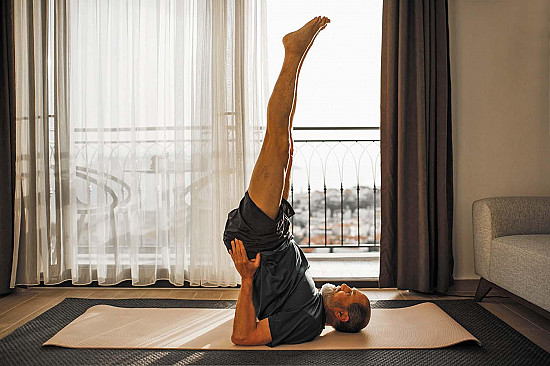
5 timeless habits for better health

What are the symptoms of prostate cancer?

Is your breakfast cereal healthy?

When pain signals an emergency: Symptoms you should never ignore

Does exercise give you energy?

Acupuncture for pain relief: How it works and what to expect

How to avoid jet lag: Tips for staying alert when you travel

Biofeedback therapy: How it works and how it can help relieve pain

Best vitamins and minerals for energy

Should you take probiotics with antibiotics?
Use the NEAT factor (nonexercise activity thermogenesis) to burn calories
Even when you're not intentionally exercising, you're still expending energy, whether you're lying on the couch or sitting in a chair jiggling your legs. This so-called nonexercise activity thermogenesis, or NEAT, may be one factor that separates lean people from their heftier counterparts. For example, a man who sits in front of a screen most of the day (a computer at work and the television at night) burns far fewer calories during the day than one who works as a cashier and plays guitar during his leisure time—even if neither one does any formal exercise.
According to Dr. James Levine, the Mayo Clinic researcher who first described and continues to study this phenomenon, NEAT can vary between two people of similar size by up to 2,000 calories a day. One study that measured NEAT in lean and obese people (all of whom were sedentary and had similar jobs) found that obese people sat an average of two-and-a-half hours more per day than lean people, while lean people stood or walked more than two hours longer each day than obese people.
If you're not a natural "NEAT-o-type," you can train yourself to boost your NEAT throughout the day. Pace around while you talk on the phone. When possible, walk down the hall to talk to a co-worker instead of e-mailing or phoning. Be less efficient while cleaning the house by alternating tasks on different floors, so you have to go up and down the stairs more often. In effect, anything you can do throughout the day that cuts the amount of time you spend in a chair will help.
Disclaimer:
As a service to our readers, Harvard Health Publishing provides access to our library of archived content. Please note the date of last review or update on all articles.
No content on this site, regardless of date, should ever be used as a substitute for direct medical advice from your doctor or other qualified clinician.

5 timeless habits for better health

What are the symptoms of prostate cancer?

Is your breakfast cereal healthy?

When pain signals an emergency: Symptoms you should never ignore

Does exercise give you energy?

Acupuncture for pain relief: How it works and what to expect

How to avoid jet lag: Tips for staying alert when you travel

Biofeedback therapy: How it works and how it can help relieve pain

Best vitamins and minerals for energy

Should you take probiotics with antibiotics?
Free Healthbeat Signup
Get the latest in health news delivered to your inbox!
Sign Up




